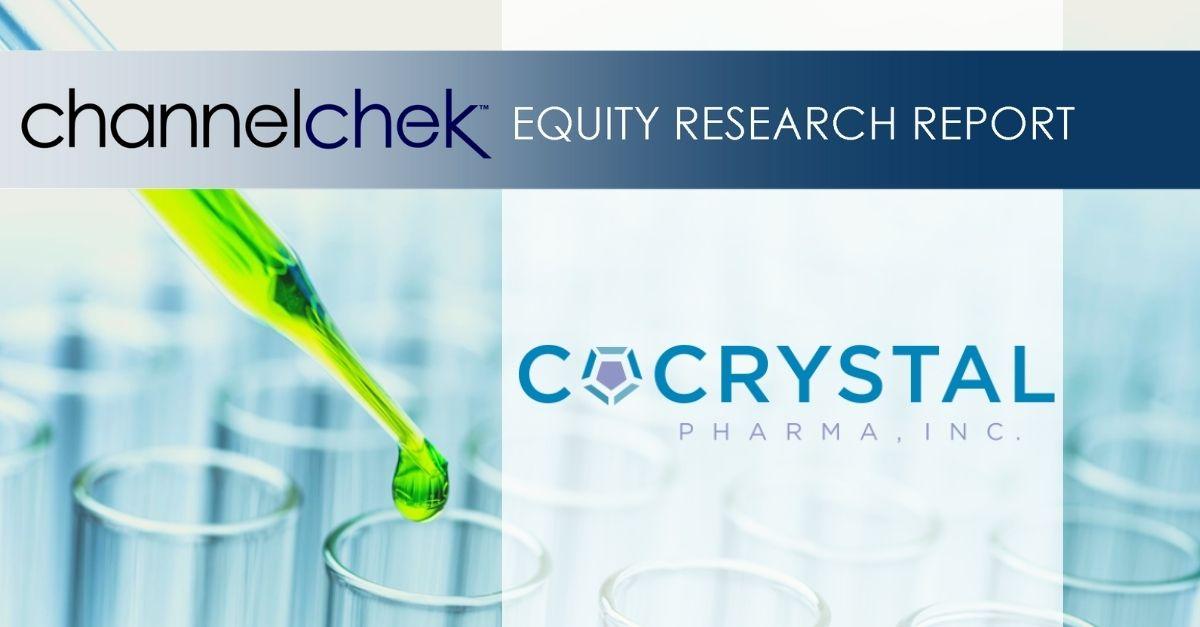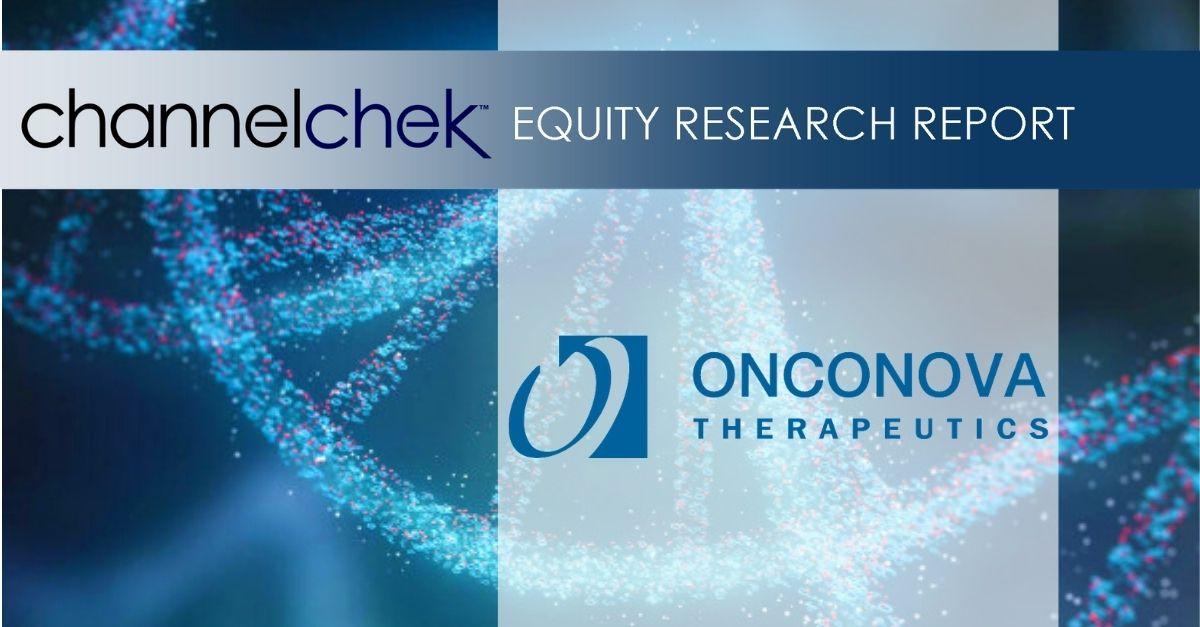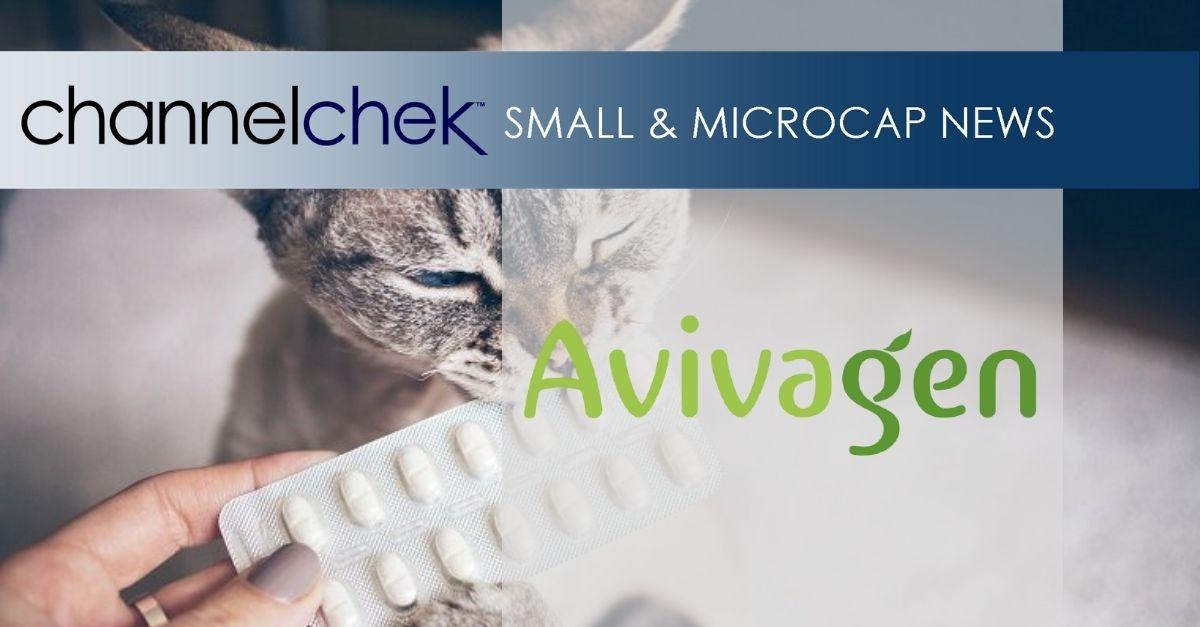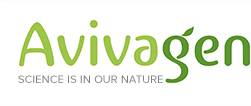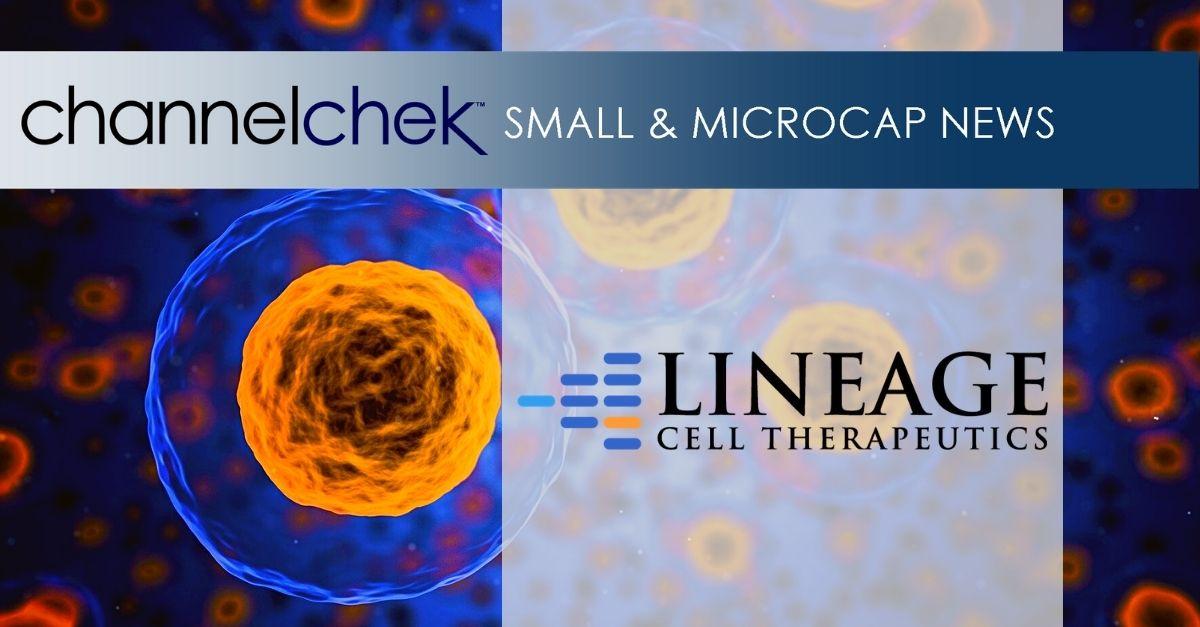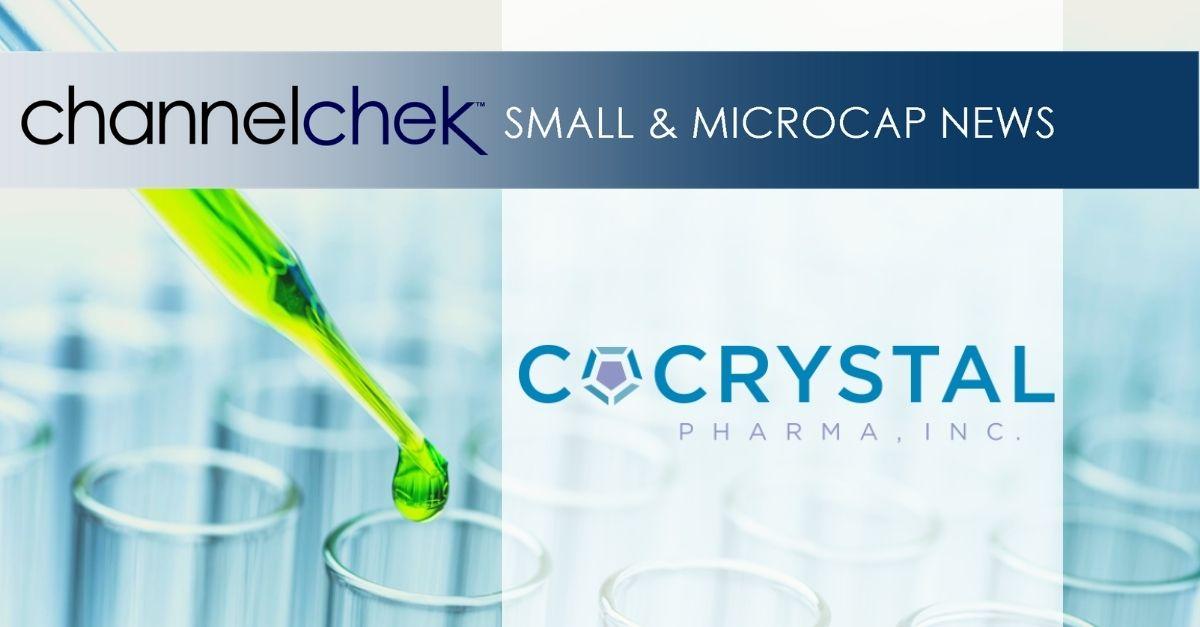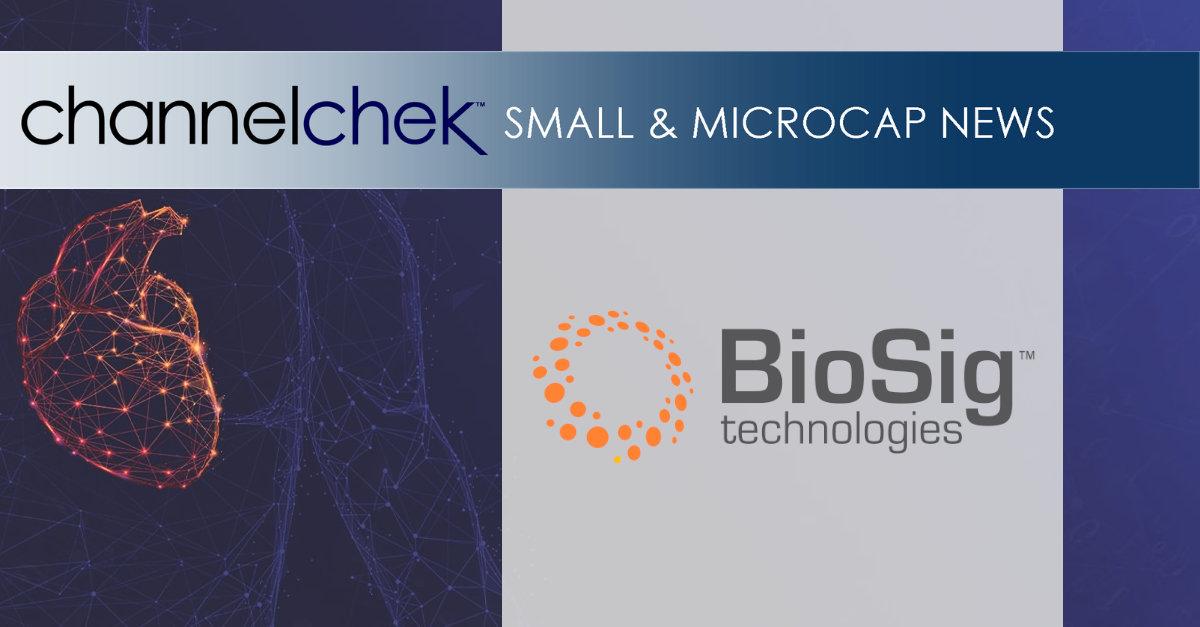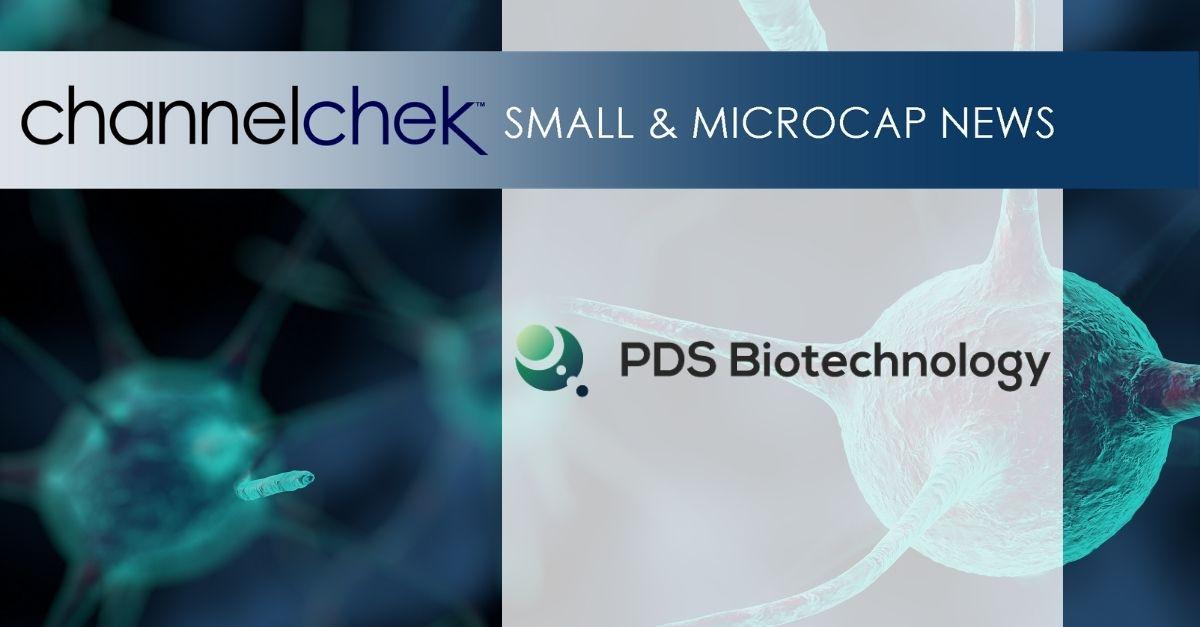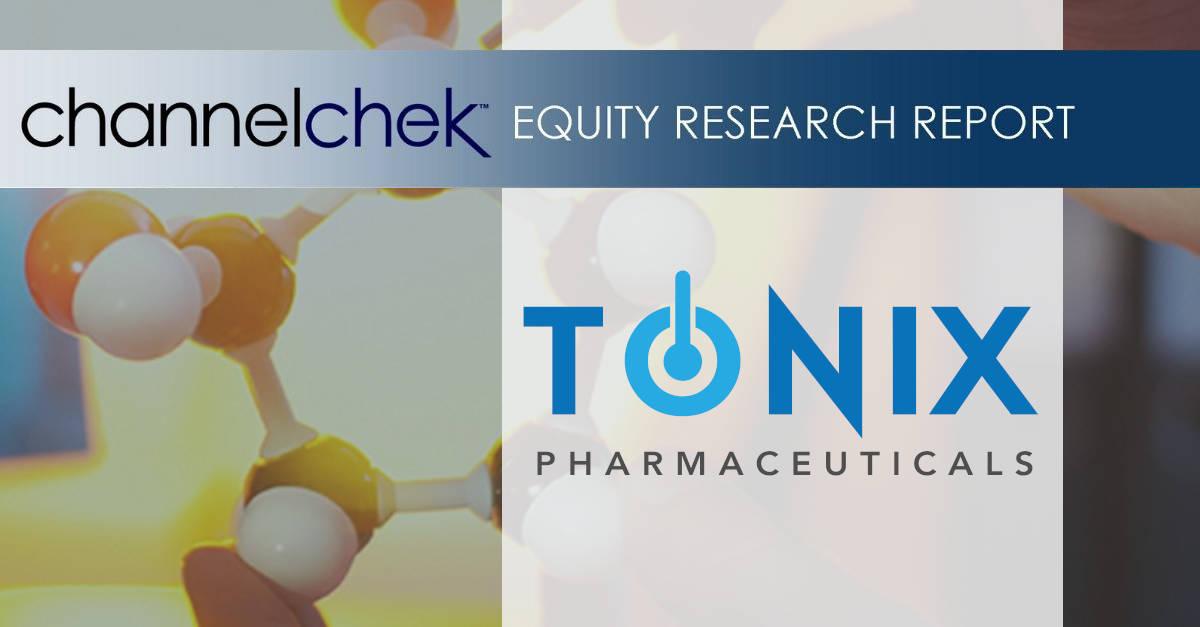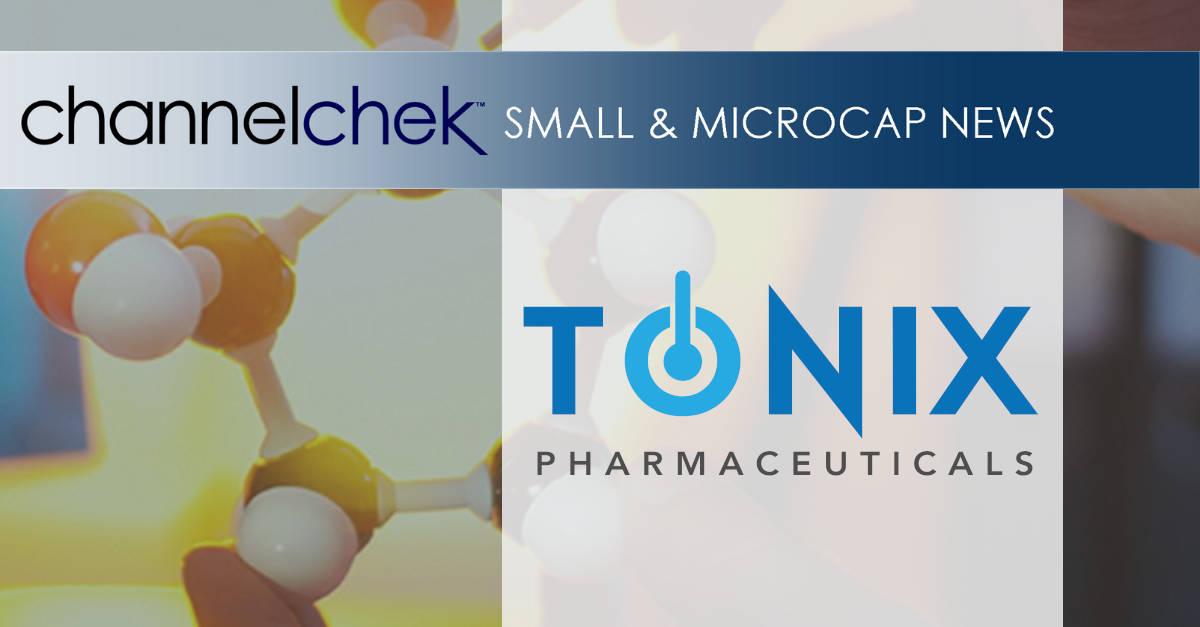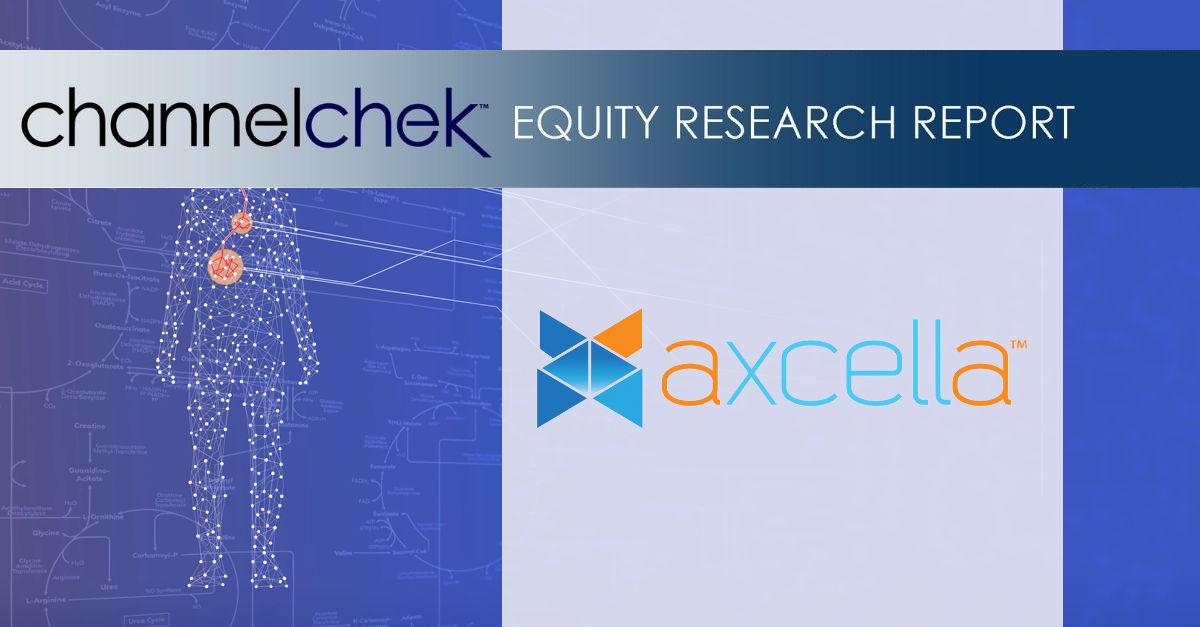
Tonix Pharmaceuticals Reports First Quarter 2022 Financial Results and Operational Highlights
Research, News, and Market Data on Tonix Pharmaceuticals
Fibromyalgia Phase 3
Trial of TNX-102 SL Enrollment Initiated; Results from Interim Analysis
Expected First Quarter 2023
Long COVID IND Cleared
for TNX-102 SL; Phase 2 Trial Expected to Initiate Second Quarter 2022
Three Additional CNS
Programs Expected to Initiate Phase 2 Studies in 2022: TNX-1300 for Cocaine
Intoxication, TNX-1900 for Chronic Migraine and TNX-102 SL for PTSD
FDA Granted Orphan-Drug
Designation for TNX-2900 for Treatment of Prader-Willi Syndrome
Organ Transplantation
Phase 1 Study of TNX-1500 Expected to Initiate Second Half 2022
Cash and Cash Equivalents
Totaled Approximately $140 Million at March 31, 2022
CHATHAM, N.J., May 09, 2022 (GLOBE NEWSWIRE) — Tonix Pharmaceuticals Holding Corp. (Nasdaq: TNXP) (Tonix or the Company), a clinical-stage biopharmaceutical company, today announced financial results for the first quarter ended March 31, 2022, and provided an overview of recent operational highlights.
“Tonix is making meaningful strides developing our rich portfolio of high impact product candidates,” said Seth Lederman, M.D., Chief Executive Officer of Tonix. “By the end of this year, we expect to have five central nervous system (CNS) programs in the clinic, led by our most advanced program, TNX-102 SL (cyclobenzaprine HCl sublingual tablets) for fibromyalgia, which is in mid-Phase 3 development. Enrollment has begun for TNX-102 SL in a registration-enabling-Phase 3 clinical trial. TNX-102 SL trials in Long COVID and PTSD are also expected to initiate enrollment in the second quarter of 2022.”
Dr. Lederman continued, “Long COVID is a growing problem because it is a chronic condition experienced by approximately 30% of people who recover from COVID-19. There is no currently approved treatment for this condition. We recently reported data from a retrospective observational study of U.S. adults that shows that 35% of Long COVID sufferers who experience multi-site pain are turning to addictive opioids. We are excited to study TNX-102 SL for this condition, since TNX-102 SL is a centrally-acting, non-addictive analgesic which is intended for chronic use. We look forward to starting our Phase 2 study for Long COVID with multi-site pain imminently.”
Gregory Sullivan, M.D., Chief Medical Officer of Tonix said, “We are excited by the opportunities ahead for our rich pipeline of CNS, rare disease, immunology and infectious disease product candidates. TNX-1300 (recombinant double mutant cocaine esterase) is expected to start enrolling in a Phase 2 trial in the second quarter of 2022 for emergency department treatment of cocaine intoxication, and TNX-1900 (intranasal potentiated oxytocin) is expected to enter the clinic in the second half of 2022 for the prevention of migraines in chronic migraineurs. In addition to the CNS programs, we expect to begin a Phase 1 study of TNX-1500, a monoclonal antibody targeting CD40 ligand, also known as CD154, which will initially be developed to prevent organ transplant rejection and, ultimately, to treat autoimmune conditions. We continue to progress our infectious disease portfolio, which is led by our smallpox vaccine, TNX-801 (live horsepox virus vaccine). We are also developing the live-virus vectored COVID-19 vaccines, TNX-1840 and TNX-1850 that are designed to express the spike proteins from the omicron and BA.2 variants, respectively.”
Recent Highlights—Key
Product Candidates*
Central Nervous System (CNS) Pipeline
TNX-102 SL (cyclobenzaprine HCl sublingual
tablet): small molecule for the management of fibromyalgia (FM)
- In April 2022, Tonix initiated enrollment in the RESILIENT study, a double-blind, randomized, placebo-controlled, potentially pivotal Phase 3 study of TNX-102 SL for the management of fibromyalgia. The two-arm trial is expected to enroll approximately 470 participants in the U.S. Results from a planned interim analysis are expected first quarter 2023.
- In March 2022, Tonix reported topline data from its second Phase 3 study, RALLY. As expected, based on interim analysis results reported in July 2021, TNX-102 SL did not achieve statistical significance over placebo on the primary endpoint of reduction in daily pain (p=0.115). Tonix reported the interim analysis of RALLY in July 2021 in which the independent data monitoring committee recommended stopping the study for futility. The Company therefore stopped enrollment of new participants while continuing those participating at that time to completion. Topline data revealed that an unexpected number of adverse event related discontinuations in both drug and placebo treated groups may have contributed to the statistical miss.
- Tonix reported positive results on the primary endpoint of reduction in daily pain (p=0.010) from the Phase 3 RELIEF study for the management of fibromyalgia in December 2020.
TNX-102 SL for the treatment of Long COVID,
also known as Post-Acute Sequelae of COVID-19 (PASC)
- In April 2022, Tonix announced the U.S. Food and Drug Administration (FDA) cleared the Investigational New Drug (IND) application to support a Phase 2 clinical study with TNX-102 SL as a potential treatment for a subset of patients with Long COVID with multi-site pain and will utilize a daily pain diary as the primary endpoint. The Phase 2 trial is expected to start second quarter 2022.
- In April 2022, Tonix announced results of a retrospective observational database study of over 50,000 adult U.S. patients with Long COVID. Results showed that over 40% of patients had fibromyalgia-like multi-site pain. These findings support the feasibility of the planned Phase 2 study which will enroll Long COVID patients with multi-site pain.
- The retrospective observational database study also revealed a high rate of opioid use in Long COVID patients with multi-site pain. These findings raise concerns about development of opioid use disorder in Long COVID patients who find nowhere else to turn for symptom relief, adding to an existing national health crisis resulting from chronic use of opioids.
TNX-102 SL for the treatment of Posttraumatic
Stress Disorder (PTSD)
- Tonix expects to begin enrolling a Phase 2 study of TNX-102 SL in police in Kenya in the second quarter of 2022. The new PTSD study will use one month look-back CAPS-5 as the primary endpoint rather than one week look-back as was used in prior studies after a clinical guidance meeting with the FDA.
TNX-1300 (recombinant double mutant cocaine
esterase): biologic for life-threatening cocaine intoxication
- Tonix expects to initiate a Phase 2 open-label safety study of TNX-1300 in an emergency department setting in the second quarter of 2022. TNX-1300 was licensed from Columbia University. A positive Phase 2a study of volunteer cocaine users in a controlled laboratory setting has been previously completed. TNX-1300 has been granted Breakthrough Therapy designation by the FDA.
TNX-1900 (intranasal potentiated oxytocin):
small peptide for migraine, craniofacial pain, insulin resistance and related
disorders, and binge eating disorder
- In late 2021, Tonix received IND clearance from the FDA to support the initiation of a Phase 2 study of TNX-1900 for the prevention of migraine headache in chronic migraineurs. The 505(b)(2) pathway for FDA approval is expected to be acceptable for this program since intravenous oxytocin is FDA approved and widely used to induce labor in pregnancy. The Company continues to expect to begin enrollment in the second half of 2022.
- In March 2022, Tonix entered into an agreement with Massachusetts General Hospital to evaluate TNX-1900 in an investigator-initiated Phase 2 clinical trial as a potential treatment for binge eating disorder. The Phase 2 clinical trial is expected to start in the second half of 2022.
- Tonix’s proprietary formulation includes magnesium (Mg), which has been reported to potentiate the binding of oxytocin to the oxytocin receptor. Further evidence for the role of Mg in potentiating the effects of oxytocin at the oxytocin receptor were published by a third party
1.
TNX-601 CR (tianeptine oxalate and naloxone
controlled-release tablets): small molecule for the treatment of major
depressive disorder, PTSD and neurocognitive dysfunction associated with
corticosteroid use.
- Based on official minutes from a pre-IND meeting with the FDA, the Company expects to initiate a Phase 2 study for the treatment of major depressive disorder (depression) in the first quarter of 2023. Tonix previously completed a Phase 1 trial for formulation development outside of the U.S.
Rare Disease Pipeline
TNX-2900 (intranasal potentiated oxytocin):
small peptide for the treatment of Prader-Willi syndrome (PWS)
- TNX-2900 received Orphan-Drug designation by the FDA for the treatment of PWS in March 2022.
- In February 2022, Tonix entered into a sponsored research agreement with Inserm (the French National Institute of Health and Medical Research) and Aix-Marseille Université to study oxytocin in the genetically engineered mouse model of Prader-Willi syndrome, a rare genetic disorder that causes distinct, but related pathological eating disorders in newborns versus adolescents and young adults.
Immunology Pipeline
TNX-1500 (anti-CD40L monoclonal antibody):
third generation monoclonal antibody for prophylaxis of organ transplant
rejection and treatment of autoimmune disorders.
- Tonix expects to start a Phase 1 study in the second half of 2022. Preliminary results from ongoing experiments in heart and kidney transplants in non-human primates at Massachusetts General Hospital indicate that TNX-1500 appears to have monotherapy efficacy in promoting rejection-free transplant organ acceptance and no evidence of thrombosis, a serious safety concern that was present in earlier generations of anti-CD40L antibodies, has been observed.
Infectious Disease Pipeline
TNX-801 (live horsepox virus vaccine for
percutaneous administration): vaccine against smallpox and monkeypox designed
as a single-administration vaccine to elicit T cell immunity
- Tonix previously reported protection of non-human primates from a monkeypox challenge2. TNX-801 is less virulent than traditional vaccinia vaccines in mice.3
TNX-1840 /-1850 (live virus vaccines based on
Tonix’s recombinant pox virus vector): COVID-19 vaccines designed as
single-administration vaccines to elicit T cell immunity
- Because the omicron and BA.2 variants have out-competed the ancestral Wuhan strain, Tonix is now planning new versions of the TNX-1800 vaccine: TNX-1840 and TNX-1850, that are designed to express spike protein from the omicron and BA.2 variants, respectively. TNX-1840 and TNX-1850 are next-generation COVID-19 vaccines using live virus technology designed to primarily elicit a T cell response believed to result in longer durability of protection and to potentially block forward transmission.
TNX-3700: COVID-19 mRNA vaccine candidate
using a zinc nanoparticle (ZNP) formulation
- In January 2022, Tonix entered into an exclusive option and research collaboration with Kansas State University (K-State) to develop ZNP mRNA vaccines that replace the lipid nanoparticle (LNP) technology in current mRNA COVID-19 vaccines. The new ZNP technology has the potential to confer increased stability to mRNA vaccines over a wide range of temperatures, addressing limits to rapid global deployment.
TNX-2300: Live virus vaccine based on a bovine
parainfluenza virus vector to protect against COVID-19
- In April 2022, Tonix announced a new preclinical research agreement with K-State to develop a vaccine candidate, TNX-2300, for the prevention of COVID-19 that utilizes a novel live virus vaccine vector platform. The candidate will also test the efficacy of co-expression of the CD40-ligand to stimulate T cell immunity.
- TNX-2300 is designed to potentially stimulate immunity against the SARS-CoV-2 spike protein. The research is being directed by Dr. Waithaka Mwangi, Kansas State University, Department of Diagnostic Medicine/Pathobiology, who is the inventor of the new technology. In addition, K-State has granted Tonix an option for an exclusive license for the clinical and commercial use of K-State’s intellectual property associated with coronavirus vaccines under this relationship.
TNX-2100 (diagnostic skin test): SARS-CoV-2
epitope peptide mixtures for intradermal administration to measure the
delayed-type hypersensitivity (DTH) reaction to SARS-CoV-2
- Tonix initiated enrollment in a dose-finding clinical study for TNX-2100 in early January 2022. However, due to the current COVID landscape in which the U.S. Centers for Disease Control and Prevention (CDC) reports4 that approximately 60% of adults and approximately 75% of children and adolescents in the U.S. have been infected with SARS-CoV-2, and the current U.S. strategy of reducing or eliminating control measures such as mask-mandates, lockdowns or surveillance, Tonix has stopped enrollment in the study and is terminating further development in the U.S.
*All of
Tonix’s product candidates are investigational new drugs or biologics and have
not been approved for any indication.
1Meyerowitz, J.G.,
Robertson, M.J., Barros-Álvarez, X. et al. The oxytocin signaling
complex reveals a molecular switch for cation dependence. Nat Struct Mol
Biol (2022). https://doi.org/10.1038/s41594-022-00728-4
2Noyce, RS, et al. Synthetic Chimeric Horsepox
Virus (scHPXV) Vaccination Protects Macaques from Monkeypox* Presented as a
poster at the American Society of Microbiology BioThreats Conference
– January 29, 2020, Arlington, VA. (https://content.equisolve.net/tonixpharma/media/10929ac27f4fb5f5204f5cf41d59a121.pdf )
3Noyce RS, et al. Construction of an infectious
horsepox virus vaccine from chemically synthesized DNA fragments. PLoS One.
2018 Jan 19;13(1): e0188453.
4Clarke KE, et al. Seroprevalence of Infection-Induced
SARS-CoV-2 Antibodies — United States, September 2021–February 2022.
MMWR Morb Mortal Wkly Rep 2022;71:606-608.
DOI: http://dx.doi.org/10.15585/mmwr.mm7117e3
Recent
Highlights–Financial
As of March 31, 2022, Tonix had $140.4 million of cash and cash equivalents, compared to $178.7 million as of December 31, 2021. Subsequent to March 31, 2022, the Company sold 33.9 million shares of common stock in at-the-market offerings (ATM) sales under a Sales Agreement with A.G.P./Alliance Global Partners, for net proceeds of approximately $6.8 million. Additionally, the Company sold 13.0 million shares of common stock under the Purchase Agreement with Lincoln Park for net proceeds of approximately $2.0 million.
Cash used in operations was approximately $31.1 million for the first quarter ended March 31, 2022, compared to $21.1 million for the first quarter ended March 31, 2021. The increase in primarily due to an increase in research and development (R&D) expense, general and administrative (G&A) expense, and increases in working capital. Capital expenditures were approximately $20.2 million for the first quarter ending March 31, 2022 compared to $0.5 million for the first quarter ended March 31, 2021. The increase was primarily due to the continued buildout of the Advanced Development Center in North Dartmouth, Mass.
First Quarter 2022 Financial Results
R&D expenses for the first quarter of 2022 were $18.4 million, compared to $15.3 million for the same period in 2021. This increase is predominately due to employee-related expenses and non-clinical expenses. We continue to expect R&D expenses to increase during 2022 as we move our clinical development programs forward and invest in our development pipeline.
G&A expenses for the first quarter of 2022 were $8.0 million, compared to $5.4 million for the same period in 2021. The increase is primarily due to employee-related expenses.
Net loss per common share was $26.4 million, or $0.05 per share, basic and diluted, for the first quarter of 2022, compared to net loss of $20.7 million, or $0.07 per share, basic and diluted, for the first quarter of 2021. The basic and diluted weighted average common shares outstanding for the first quarter of 2022 was 522,060,899, compared to 290,106,510 shares for the first quarter of 2021.
About Tonix Pharmaceuticals Holding Corp.1
Tonix is a clinical-stage biopharmaceutical company focused on discovering, licensing, acquiring and developing therapeutics to treat and prevent human disease and alleviate suffering. Tonix’s portfolio is composed of central nervous system (CNS), rare disease, immunology and infectious disease product candidates. Tonix’s CNS portfolio includes both small molecules and biologics to treat pain, neurologic, psychiatric and addiction conditions. Tonix’s lead CNS candidate, TNX-102 SL (cyclobenzaprine HCl sublingual tablet), is in mid-Phase 3 development for the management of fibromyalgia with a new Phase 3 study launched in the second quarter of 2022 and interim data expected in the first quarter of 2023. TNX-102 SL is also being developed to treat Long COVID, a chronic post-acute COVID-19 condition. Tonix expects to initiate a Phase 2 study in Long COVID in the second quarter of 2022. TNX-1300 (cocaine esterase) is a biologic designed to treat cocaine intoxication that is expected to start a Phase 2 trial in the second quarter of 2022. TNX-1300 has been granted Breakthrough Therapy Designation by the FDA. Finally, TNX-1900 (intranasal potentiated oxytocin), a small molecule in development for chronic migraine, is expected to enter the clinic with a Phase 2 study in the second half of 2022. Tonix’s rare disease portfolio includes TNX-2900 (intranasal potentiated oxytocin) for the treatment of Prader-Willi syndrome. TNX-2900 has been granted Orphan-Drug Designation by the FDA. Tonix’s immunology portfolio includes biologics to address organ transplant rejection, autoimmunity and cancer, including TNX-1500 which is a humanized monoclonal antibody targeting CD40-ligand being developed for the prevention of allograft and xenograft rejection and for the treatment of autoimmune diseases. A Phase 1 study of TNX-1500 is expected to be initiated in the second half of 2022. Tonix’s infectious disease pipeline consists of a vaccine in development to prevent smallpox and monkeypox called TNX-801, next-generation vaccines to prevent COVID-19, and a platform to make fully human monoclonal antibodies to treat COVID-19. Tonix’s lead vaccine candidates for COVID-19 are TNX-1840 and TNX-1850, which are live virus vaccines based on Tonix’s recombinant pox live virus vector vaccine platform.
1All of Tonix’s product candidates are
investigational new drugs or biologics and have not been approved for any
indication.
This press release and further information about Tonix can be found at www.tonixpharma.com.
Forward Looking Statements
Certain statements in this press release are forward-looking within the meaning of the Private Securities Litigation Reform Act of 1995. These statements may be identified by the use of forward-looking words such as “anticipate,” “believe,” “forecast,” “estimate,” “expect,” and “intend,” among others. These forward-looking statements are based on Tonix’s current expectations and actual results could differ materially. There are a number of factors that could cause actual events to differ materially from those indicated by such forward-looking statements. These factors include, but are not limited to, risks related to the failure to obtain FDA clearances or approvals and noncompliance with FDA regulations; delays and uncertainties caused by the global COVID-19 pandemic; risks related to the timing and progress of clinical development of our product candidates; our need for additional financing; uncertainties of patent protection and litigation; uncertainties of government or third party payor reimbursement; limited research and development efforts and dependence upon third parties; and substantial competition. As with any pharmaceutical under development, there are significant risks in the development, regulatory approval and commercialization of new products. Tonix does not undertake an obligation to update or revise any forward-looking statement. Investors should read the risk factors set forth in the Annual Report on Form 10-K for the year ended December 31, 2021, as filed with the Securities and Exchange Commission (the “SEC”) on March 14, 2022, and periodic reports filed with the SEC on or after the date thereof. All of Tonix’s forward-looking statements are expressly qualified by all such risk factors and other cautionary statements. The information set forth herein speaks only as of the date thereof.
TONIX PHARMACEUTICALS HOLDING CORP.
CONDENSED CONSOLIDATED STATEMENTS OF OPERATIONS
(In Thousands, Except Share and Per Share Amounts)
(unaudited)

TONIX PHARMACEUTICALS HOLDING CORP.
CONDENSED CONSOLIDATED BALANCE SHEETS
(In Thousands)
(Unaudited)

1The condensed consolidated balance sheet for the year ended December 31, 2021 has been derived from the audited financial statements but do not include all of the information and footnotes required by accounting principles generally accepted in the United States for complete financial statements.
Jessica Morris (corporate)
Tonix Pharmaceuticals
investor.relations@tonixpharma.com
(862) 799-8599
Olipriya Das, Ph.D. (media)
Russo Partners
Olipriya.Das@russopartnersllc.com
(646) 942-5588
Peter Vozzo (investors)
ICR Westwicke
peter.vozzo@westwicke.com
(443) 213-0505
Source: Tonix Pharmaceuticals Holding Corp.

